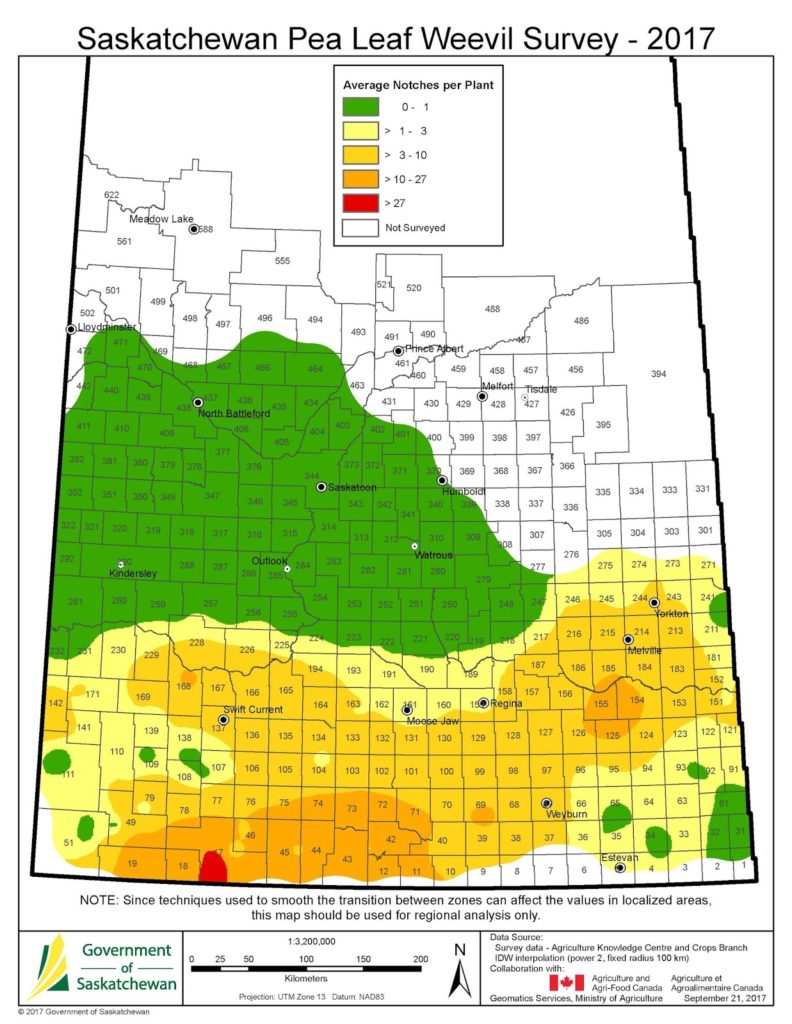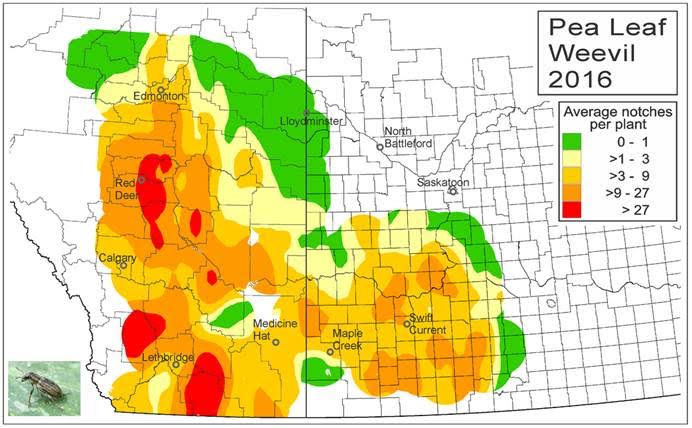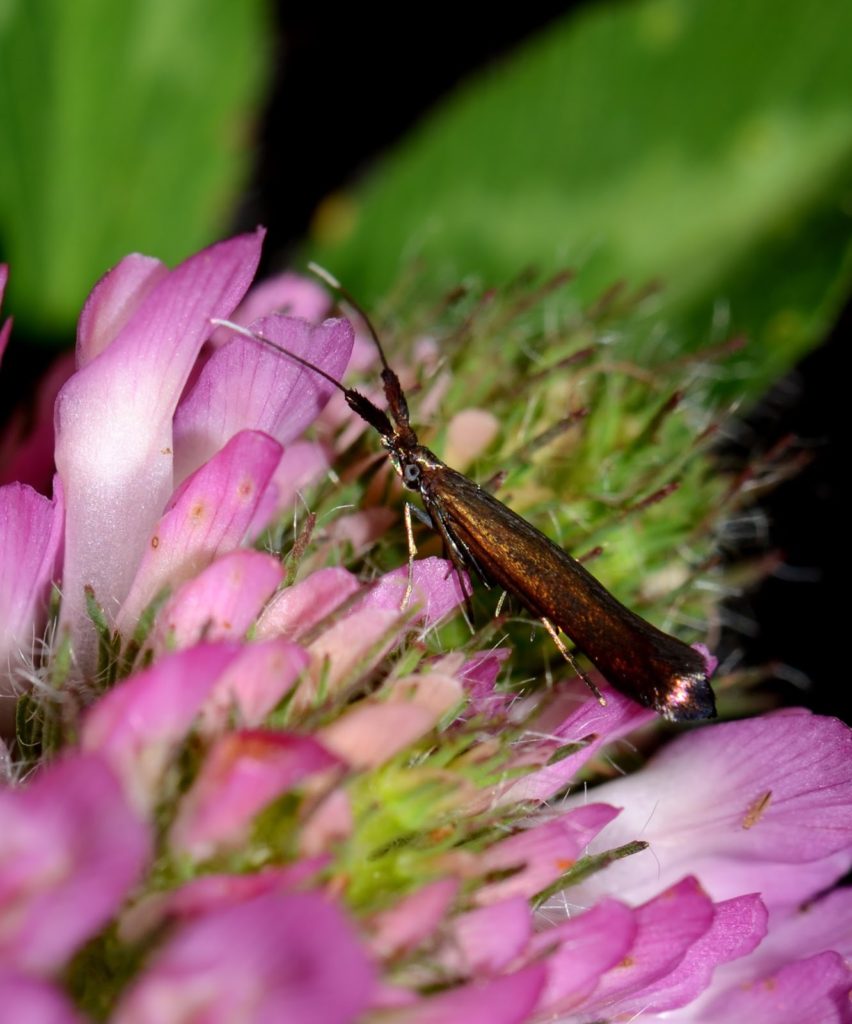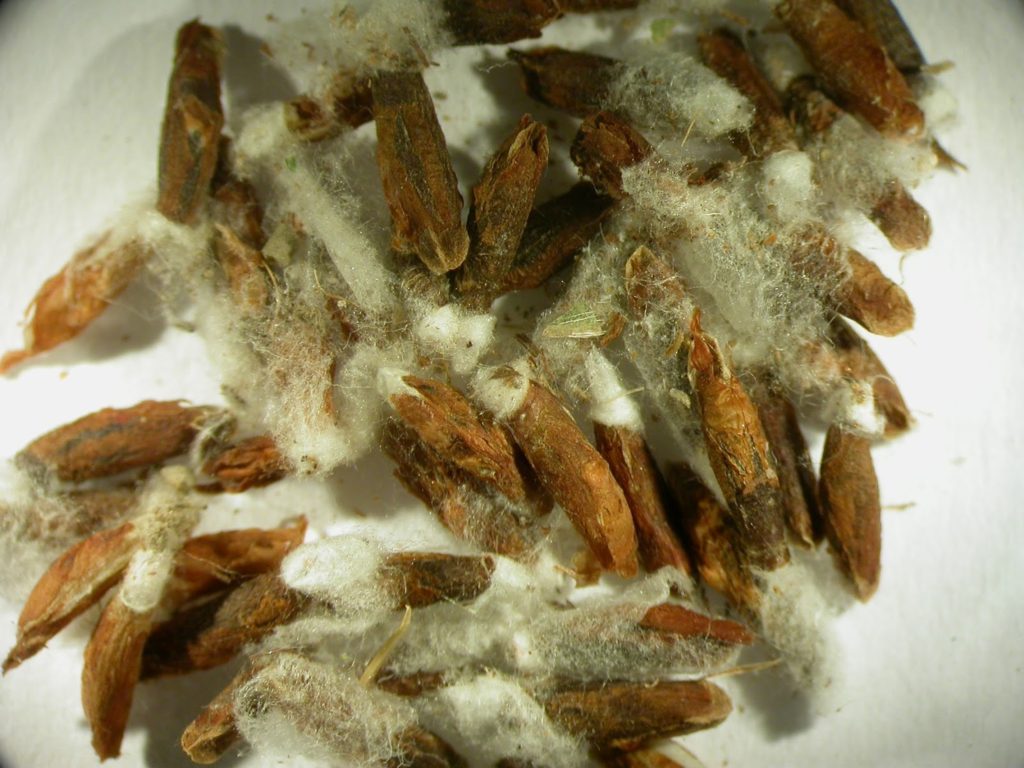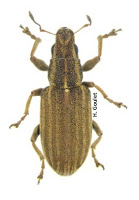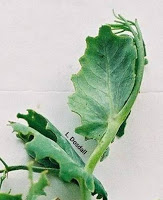This week’s insect of the week is the pea aphid (Acyrthosiphon pisum). This long-legged, pear-shaped aphid is 3-4 mm long, light to dark green and each antennal segment is tipped by a black band. It feeds on field peas, alfalfa, broad beans, chickpeas, clover and lentils. Feeding damage can reduce yields due to lower seed formation and seed size. Leaves may turn yellow and overall plant growth can be delayed.
Pea aphids overwinter as eggs on the leaves and stems of perennial legumes (eg. clover or alfalfa crowns). They produce 2-3 generations asexually before winged females migrate to summer host crops where several more generations are produced. Winged sexual forms develop in late summer that mate and females return to winter host crops to lay eggs.
For more information about pea aphids, see our Insect of the Week page!
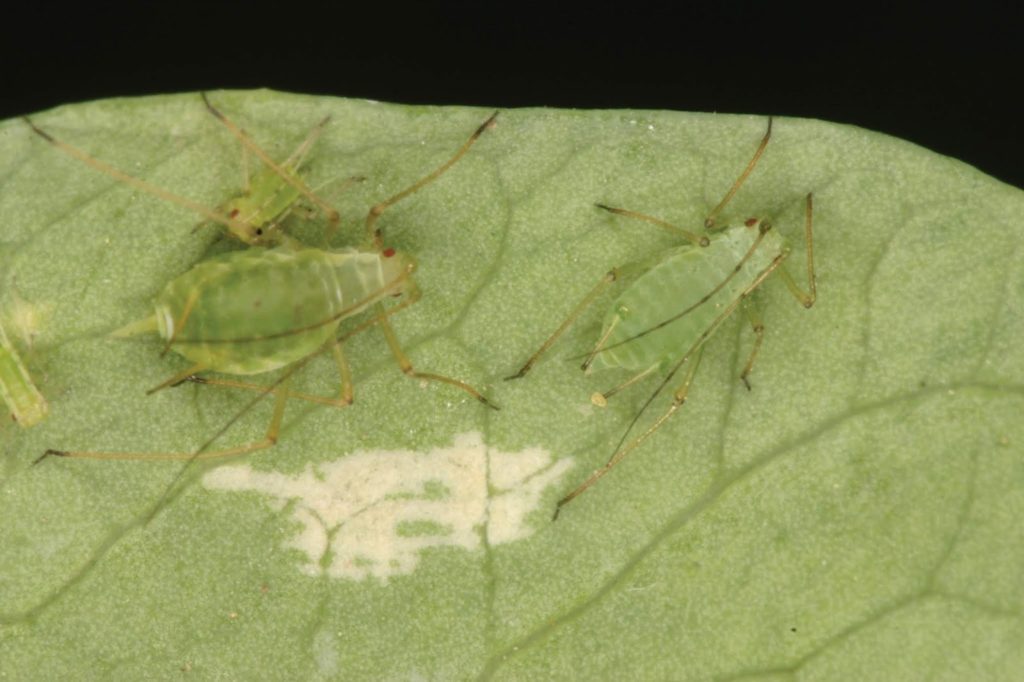
©Mike Dolinski, MikeDolinski@hotmail.com

